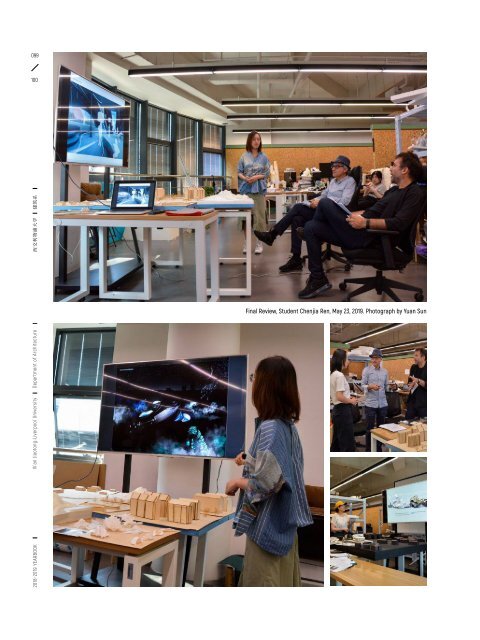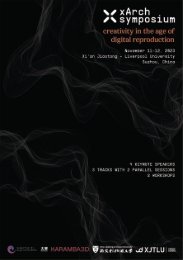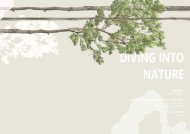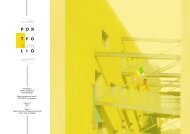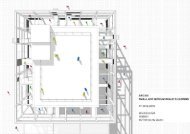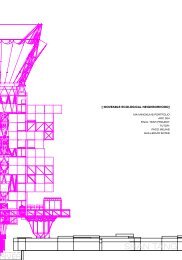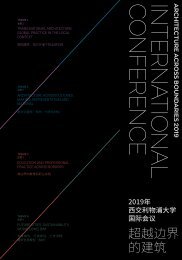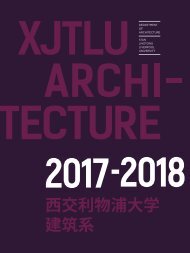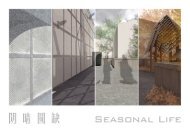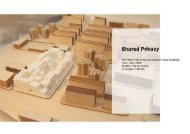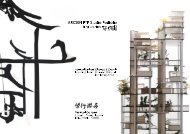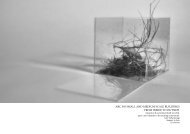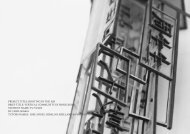YEARBOOK 2018 - 2019 | XJTLU DEPARTMENT OF ARCHITECTURE
The sixth edition of the yearbook of the Department of Architecture at Xi'an Jiaotong-Liverpool University presents student works created during the academic year 2018 - 2019. The yearbook exemplifies the new model for Chinese architectural education for which the department was commended by the Royal Institute of British Architects (RIBA). It is also a showcase of the creative culture that has guided our students towards successful international careers as responsible and creative architectural designers. The Department of Architecture at XJTLU offers RIBA Part 1, 2 and 3.
The sixth edition of the yearbook of the Department of Architecture at Xi'an Jiaotong-Liverpool University presents student works created during the academic year 2018 - 2019. The yearbook exemplifies the new model for Chinese architectural education for which the department was commended by the Royal Institute of British Architects (RIBA). It is also a showcase of the creative culture that has guided our students towards successful international careers as responsible and creative architectural designers. The Department of Architecture at XJTLU offers RIBA Part 1, 2 and 3.
Create successful ePaper yourself
Turn your PDF publications into a flip-book with our unique Google optimized e-Paper software.
099<br />
100<br />
ARC204<br />
Design Studio<br />
Small Urban Buildings<br />
<strong>2018</strong>-<strong>2019</strong> <strong>YEARBOOK</strong> Xi’an Jiaotong-Liverpool University Department of Architecture 西 交 利 物 浦 大 学 建 筑 系<br />
Final Review, Student Chenjia Ren, May 23, <strong>2019</strong>. Photograph by Yuan Sun<br />
Level 2<br />
( Year 3 | Semester 2 )<br />
Module Credits<br />
10<br />
Module Leader<br />
Zayad Motlib<br />
Teaching Team<br />
Gisela Loehlein<br />
Sandro Rolla<br />
Marco Cimillo<br />
Kihong Ku<br />
Guest Critics<br />
Jessica Ellen<br />
Nicola Pagnano<br />
JC<br />
Number of Students<br />
81<br />
Suzhou Museum of Science and Technology<br />
Over recent years, museums of all kinds have faced complex challenges<br />
as they adapt to evolving technological and cultural transformations<br />
of the twenty first century. With exhibitions becoming more socially<br />
engaging, the boundaries between museums and the real world are<br />
gradually blurring. The recent explosion of technological innovations<br />
has further expanded the way ideas and information are generated,<br />
exchanged, and accessed. This change has initiated a paradigm shift<br />
in the way we think about museums and their role in modern society.<br />
Museums today are becoming more versatile as they respond to the<br />
diverse interests of the public.<br />
Suzhou's Museum of Science of Technology will be uniquely positioned<br />
to celebrate the new cultural and technological transformation. It will be<br />
a place where people go to experience wonder, surprise, technological<br />
engagement, and the joy of discovery. The museum departs from<br />
the traditional notion of a museum as a mere a sequence of empty<br />
spaces, and instead develops into a social hub that fosters education,<br />
technological awareness, and future innovations. In this museum, people<br />
can meet like-minded people, hold debates, organize public lectures and<br />
social events on a regular basis. Positioned between Tiger Hill and the<br />
ancient city of Suzhou, it aspires to become an emblem of technology<br />
and innovation; a beating heart of a living culture, easily accessible to<br />
all people and of true value to society as it bridges the city past with its<br />
future.<br />
Level 02 – Year 3<br />
B Eng Architecture Programme


